STORIES
小林屋について
History of Kinosaki
城崎温泉の歴史
According to legend, Kinosaki Onsen was founded around 717 AD by Dochi-shonin, a Buddhist saint. Since the Edo period, Kinosaki has been a popular destination to spend weeks with hot springs for rest and recuperation. On the Onsen ranking table issued during the Edo period, Kinosaki Onsen was ranked second in Western Japan. KOBAYASHIYA proudly boasts a 300-year history as traditional ryokans (Japanese style inn) in Kinosaki Onsen which located within a minute walking from Ichi-no-yu, a landmark serving as the heart of the town.
城崎温泉の歴史7世紀(養老年間)に道智上人により開かれた霊湯であるとされる城崎温泉は、江戸時代になると大勢の湯治客が訪れる温泉地として名を馳せ、約60件を超える旅館が立ち並びました。江戸時代の温泉番付では西の関脇(最高位は大関)にランクされています。 小林屋は城崎温泉の中心地、一の湯からすぐの立地にて、創業以来300年の歴史を重ねて参りました。
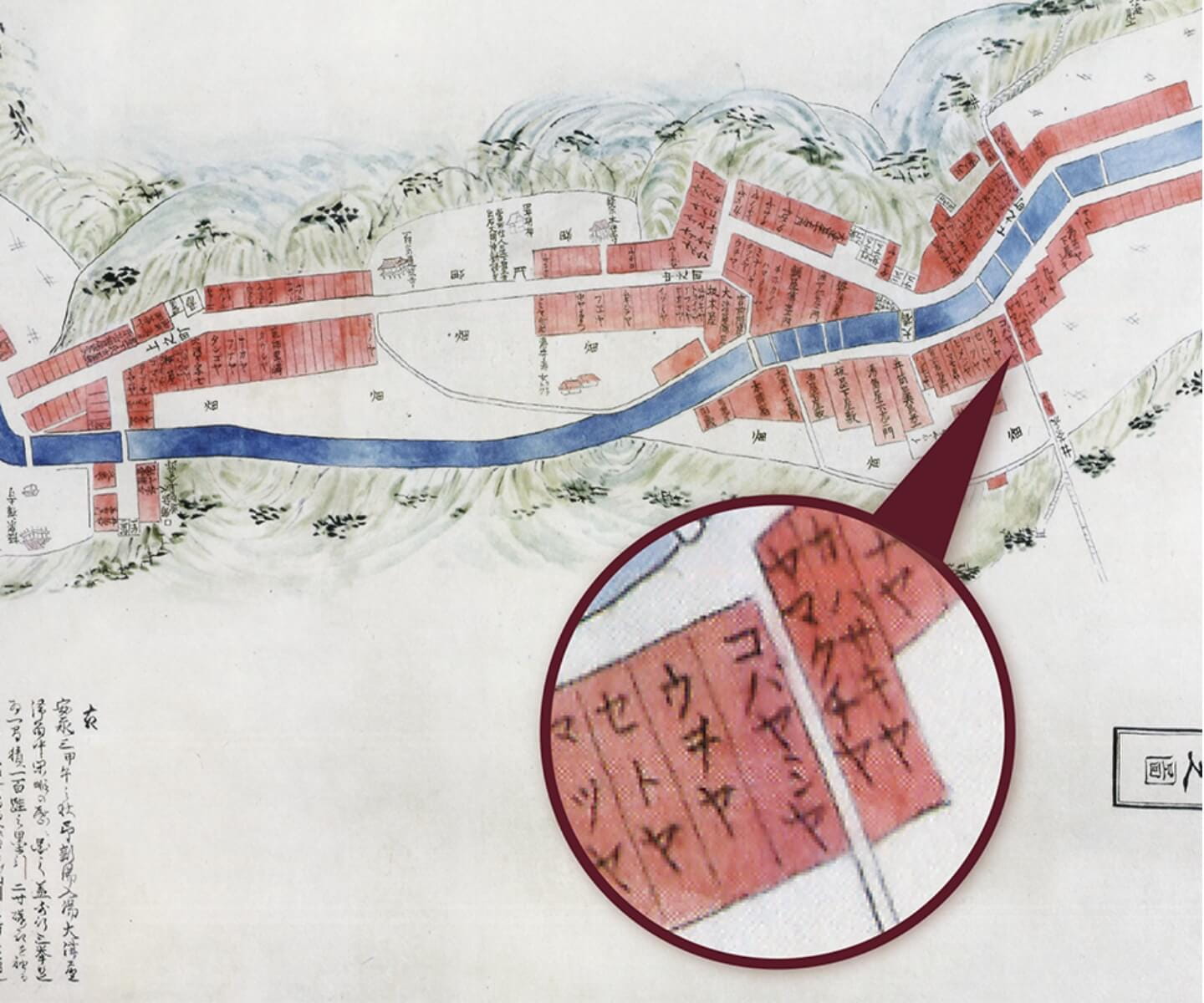
Birth of KOBAYASHIYA
小林屋の創業
Founded in Genroku era (1688-1704), the KOBAYASHIYA ryokan began as a noble pottery shop called Setoya before branching out into the hotel business. Our 6th president Kichiemon, 19th Mayor of Kinosaki Town is the man who planted first 30 willow trees between Otani Bridge and King Bridge, creating the current landscape design after the Great Hokutan Earthquake(1925). In 2021, contemporary artist Tomori Nagamoto was sworn in as the 11th president of KOBAYASHIYA.
小林屋の創業元禄期(1688-1704年)に初代、小林屋武右衛門が営む「小林屋」と、瀬戸物商の「せとや」が合併し現在の旅館を創業。六代目:井上吉右衛門(19代城崎町長)は、北但大震災後の昭和7年に大谷橋~王橋間に柳を30本植樹し、現在につづく柳並木の景観を築いた立役者として知られています。当代は2021年代表取締役に就任した11代目 永本冬森、女将 永本亜希子。
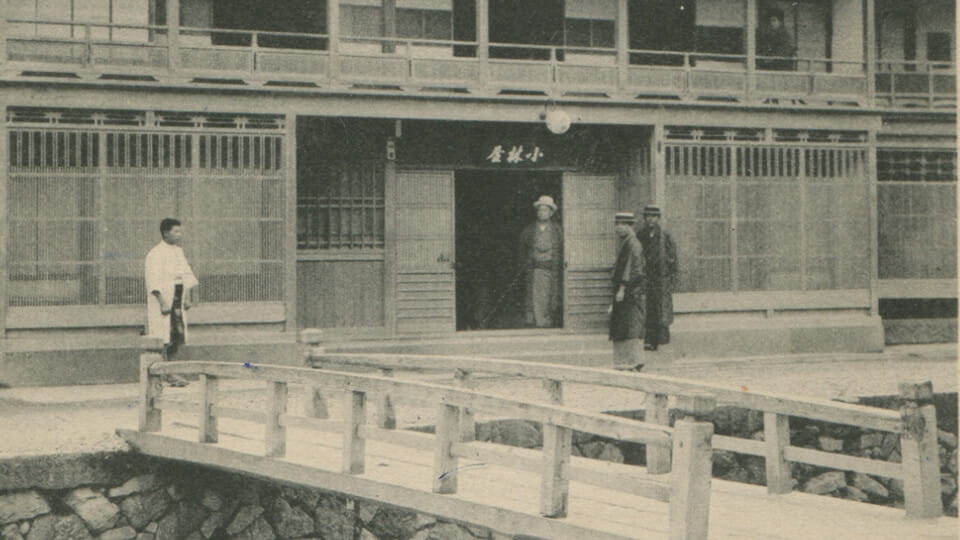
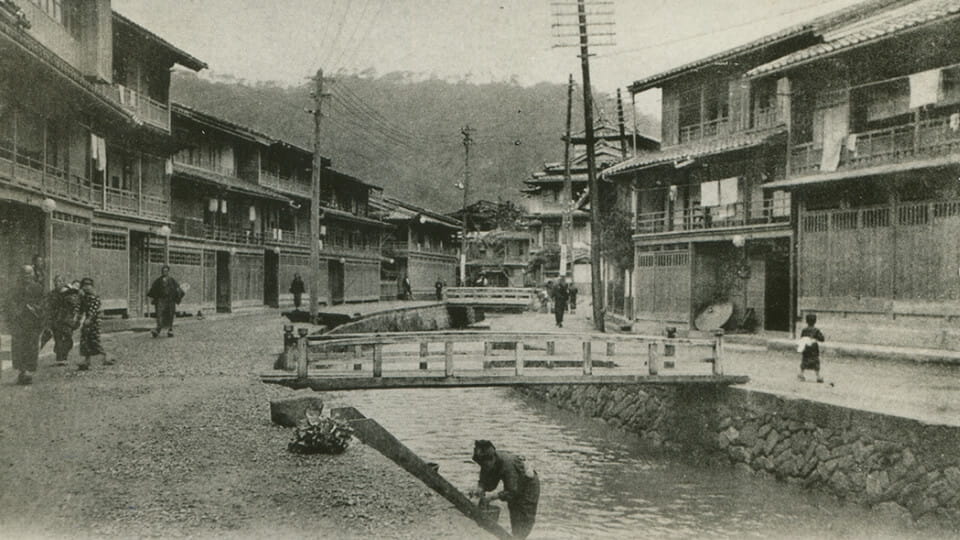
National Cultural Property
登録有形文化財
Among the oldest ryokans in Kinosaki Onsen, the building of Kobayashiya is famous for its architecture of a three-story wooden construction with traditional construction methods. The current building was constructed and opened after the Hokutan earthquake (1925) and it registered as a Tangible Cultural Properties of Japan (Registered in 2015).
登録有形文化財伝統的な木造旅館が軒を並べる城崎温泉街の中でも、ひときわ歴史を感じさせる外観を保持する小林屋。現在の建物は、大正14年の北但大震災後に再建されたもので、木造3階建て、ベンガラ塗装を施した耐風板壁をもつ建造物として、2015年に登録有形文化財に指定されました。
A Major Renovation Project
令和の大改修
KOBAYASHIYA has undergone its first major renovation in over 100 years. The original purpose of the renovation work was mainly to restore the dilapidated building. In 2021, the noted Japanese architecture firm Suppose Design Office joined our project as design supervisor and took the lead for a bold image renewal that combines modern comfort and historical designs such as structure and materials.
おおよそ100年ぶりとなる小林屋の大規模改修は、当初老朽化した建物の修復がメインでした。しかしながら、2021年にサポーズ・デザイン・オフィスが設計監修に入ったことにより、構造や素材など、歴史的意匠を生かしつつ、現代的な快適さとデザイン性を兼ね備えた、大胆なイメージの刷新を狙ったリノベーションプロジェクトに発展しました。
CREDIT/
改修工事クレジット
Restoration & Renewal Project Members: Collaborate with national and regional colleagues and partners:
- [Renovation Design/設計] SUPPOSE DESIGN OFFICE(谷尻誠、吉田愛)
- [FFE&OSE Design/空間] etc.inc (吉田愛)
- [General Contractor/施工] Habuta Building Firm /圡生田工務店(久保真澄)
- [Book Select/選書] BACH(幅允孝)
- [Art Direction/美術] one.inc(金子カズキ)
- [WEB/システム] Ametsuchi Design /あめつちデザイン(霜竹弘一、菅原優)
- [Paper/和紙] 3F:Hatano Wataru/ ハタノワタル
- [Paper/和紙] 2F:Kanji Nakahara/ 中原寛治
- [Mud/土壁] Medes(三浦基樹)
ABOUT US
人物紹介
About the Current Owner
現オーナー夫妻について
About the Current Owner
現オーナー夫妻について
Tomori Nagamoto (11th president of KOBAYASHIYA) Born in Hokkaido, the northern island of Japan and raised in Shonan area of Kanagawa prefecture, Tomori Nagamoto moved to Canada aged 20 to start his career as a visual artist. Over the last 25 years, his work has been extensively exhibited and published in Canada, U.S. and Asia, recognized for his unique line drawings of celebrities by ballpoint pen and washi paper.
As a tea instructor, Tomori practicing tea ritual with the grand master (O-Iemoto) of a four hundred year old tea lineage headquartered in Kamakura, Japan. Since 2008, he has been producing a number of tea ceremony events entitled EATEA which aim for a mixture of contemporary art and traditional tea forms.
As a tea instructor, Tomori practicing tea ritual with the grand master (O-Iemoto) of a four hundred year old tea lineage headquartered in Kamakura, Japan. Since 2008, he has been producing a number of tea ceremony events entitled EATEA which aim for a mixture of contemporary art and traditional tea forms.
永本冬森(11代目当主) 北海道で生まれ、湘南で育ち二十歳まで日本で過ごしたのちカナダへ移住。過去25年に渡り、現代美術家として北米を拠点に数々の展覧会やプロジェクトを実施。作風はボールペンと和紙で描く独特の線画で知られる。
また茶人として、2008年より茶の湯と現代アートを融合させた独自の茶会[EATEA]シリーズを主宰。
また茶人として、2008年より茶の湯と現代アートを融合させた独自の茶会[EATEA]シリーズを主宰。
Akiko Nagamoto (Okami, land lady of KOBAYASHIYA) Born and raised in Kinosaki onsen. As the eldest daughter of the successor to Kobayashiya, she has been involved in the ryokan business since she was a child. Akiko is a central figure of Kobayashiya who brings together a wide range of employees of all ages and drives the heart of the ryokan.
永本亜希子(小林屋女将) 城崎生まれ、城崎育ちで、小林屋後継者の長女として幼少の頃より旅館業務に携わる。年齢層の幅広い従業員を取りまとめ、旅館の心臓を動かす中心人物。
Introduction of Designer
設計士の紹介
Introduction of Designer
設計士の紹介
SUPPOSE DESIGN OFFICE(Makoto Tanijiri, Ai Yoshida )
Based in Tokyo and Hiroshima, Suppose Design Office is a Japanese architecture firm founded by Makoto Tanijiri and Ai Yoshida. Since 2000, they has been working on numerous projects in Japan and overseas, from interiors to housing and complex facilities at both domestically and internationally.
Makoto Tanijiri holds a degree in architecture from Anabuki Design College. He has been a visiting professor at Hiroshima Jogakuin University and a part-time lecturer at the Anabuki Design College. In addition to the recently opened [BIRD BATH & KIOSK], in various fields such as [tecture] and [DAICHI], the range of his activities is expanding.
Ai Yoshida graduated from Anabuki Design College in 1994. She worked at Izutsu Co., and Kikuchi Design before establishing SUPPOSE DESIGN OFFICE. She also founded an interior design/styling company [et cetera Inc. ] in 2021.
Based in Tokyo and Hiroshima, Suppose Design Office is a Japanese architecture firm founded by Makoto Tanijiri and Ai Yoshida. Since 2000, they has been working on numerous projects in Japan and overseas, from interiors to housing and complex facilities at both domestically and internationally.
Makoto Tanijiri holds a degree in architecture from Anabuki Design College. He has been a visiting professor at Hiroshima Jogakuin University and a part-time lecturer at the Anabuki Design College. In addition to the recently opened [BIRD BATH & KIOSK], in various fields such as [tecture] and [DAICHI], the range of his activities is expanding.
Ai Yoshida graduated from Anabuki Design College in 1994. She worked at Izutsu Co., and Kikuchi Design before establishing SUPPOSE DESIGN OFFICE. She also founded an interior design/styling company [et cetera Inc. ] in 2021.
谷尻誠(建築家・起業家) 1974年 広島県生まれ。2000年SUPPOSE DESIGN OFFICEを設立。多数のプロジェクトを手がける傍ら、穴吹デザイン専門学校特任講師、広島女学院大学客員教授なども勤める。近年「tecture」、「DAICHI」をはじめとする多分野で開業、事業と設計をブリッジさせて活動している。主な著書に『CHANGE-未来を変える、これからの働き方-』(エクスナレッジ)、『1000%の建築~僕は勘違いしながら生きてきた』(エクスナレッジ)、『談談妄想』(ハースト婦人画報社)。
吉田愛(建築家) 1974年広島県生まれ。SUPPOSE DESIGN OFFICE設立と同時に参加、2014年からは谷尻誠とともに共同代表を務める。各種設計のほかエキシビションやインスタレーション、各プロジェクトのグラフィック、アートなどのディレクションや空間スタイリング業務も自らで行い、さまざまな分野の領域を横断する。2021年、空間プロデュースやインテリアスタイリングを事業の核とする「etc.Inc」を設立。
吉田愛(建築家) 1974年広島県生まれ。SUPPOSE DESIGN OFFICE設立と同時に参加、2014年からは谷尻誠とともに共同代表を務める。各種設計のほかエキシビションやインスタレーション、各プロジェクトのグラフィック、アートなどのディレクションや空間スタイリング業務も自らで行い、さまざまな分野の領域を横断する。2021年、空間プロデュースやインテリアスタイリングを事業の核とする「etc.Inc」を設立。
IDENTITY
小林屋の特徴
Utsuwa
器
KOBAYASHIYA carefully treats vintage vessels that have been handed down since ancient times. We also actively collect Japanese contemporary vessels to support Japanese craft art and artisans. Some of the collections are actually used in our guest rooms and main dining halls.
小林屋は古来から受け継いできたヴィンテージの器を大切に扱っています。それと同時に、工芸品や職人を支援するため、日本の現代作家の器や作品を積極的に収集し、また一部のコレクションは、実際に客室や食事会場などで使用されています。
Washi
和紙
Washi -Japanese paper-
Washi is one of of Japan’s most fundamental material for architecture and it plays important role in KOBAYASHIYA’s major renovation. Our penthouse suite covered with handmade Kurotani washi for wall and celling, dining table, sliding doors, and even the grill of air conditioner. Above all, the dining table installed in the lobby by Wataru Hatano, a washi artist from Ayabe, Kyoto, has a strong presence as a work of art that goes beyond furniture.
Washi is one of of Japan’s most fundamental material for architecture and it plays important role in KOBAYASHIYA’s major renovation. Our penthouse suite covered with handmade Kurotani washi for wall and celling, dining table, sliding doors, and even the grill of air conditioner. Above all, the dining table installed in the lobby by Wataru Hatano, a washi artist from Ayabe, Kyoto, has a strong presence as a work of art that goes beyond furniture.
和紙は日本建築を構成する最も基本的な素材の一つで、小林屋の大改修においても重要な役割を果たしています。客室の襖や障子はもちろん、壁や天井など広範囲に、またエアコンのグリルやドアの引手といった細部にも使用されています。中でもロビーに設えた京都・綾部の作家ハタノワタル氏によるダイニングテーブルは、家具を超えたアート作品としても存在感を放っています。
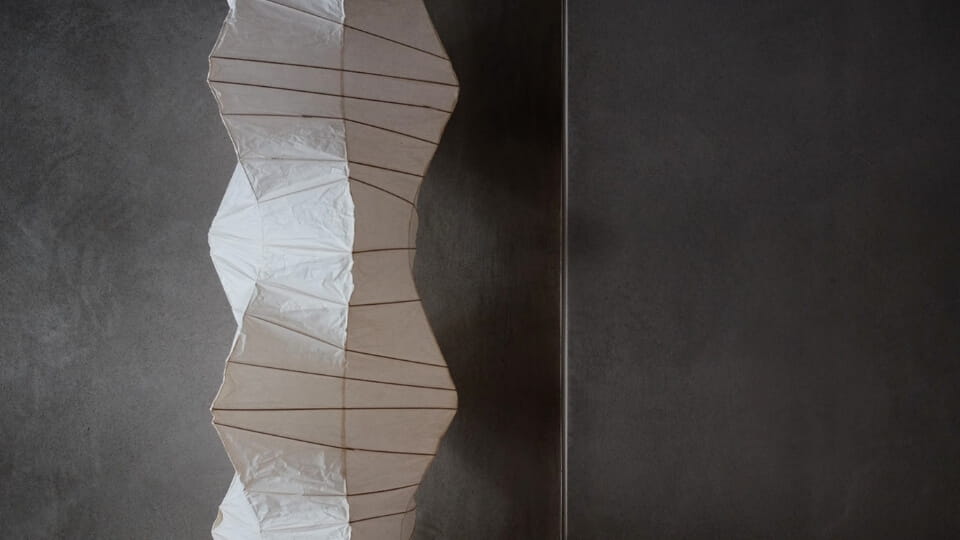
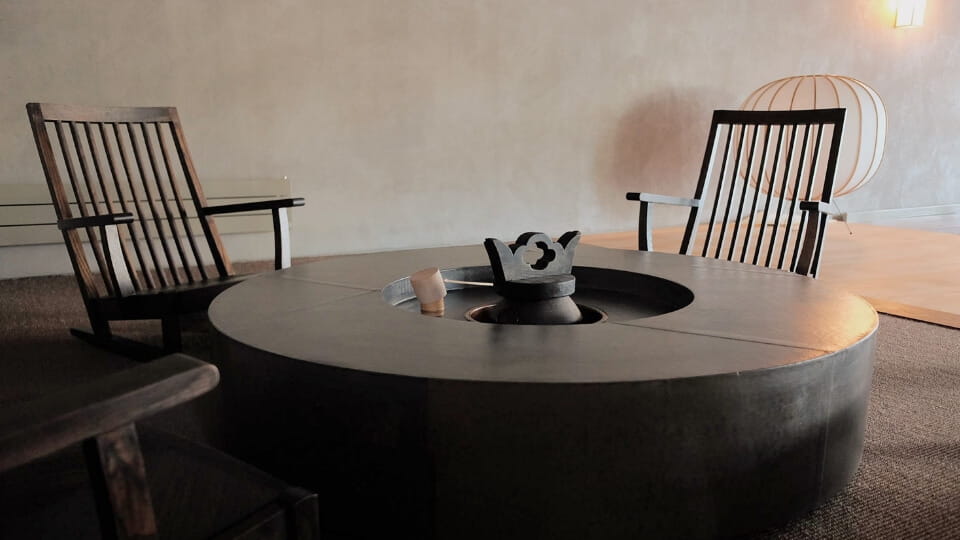
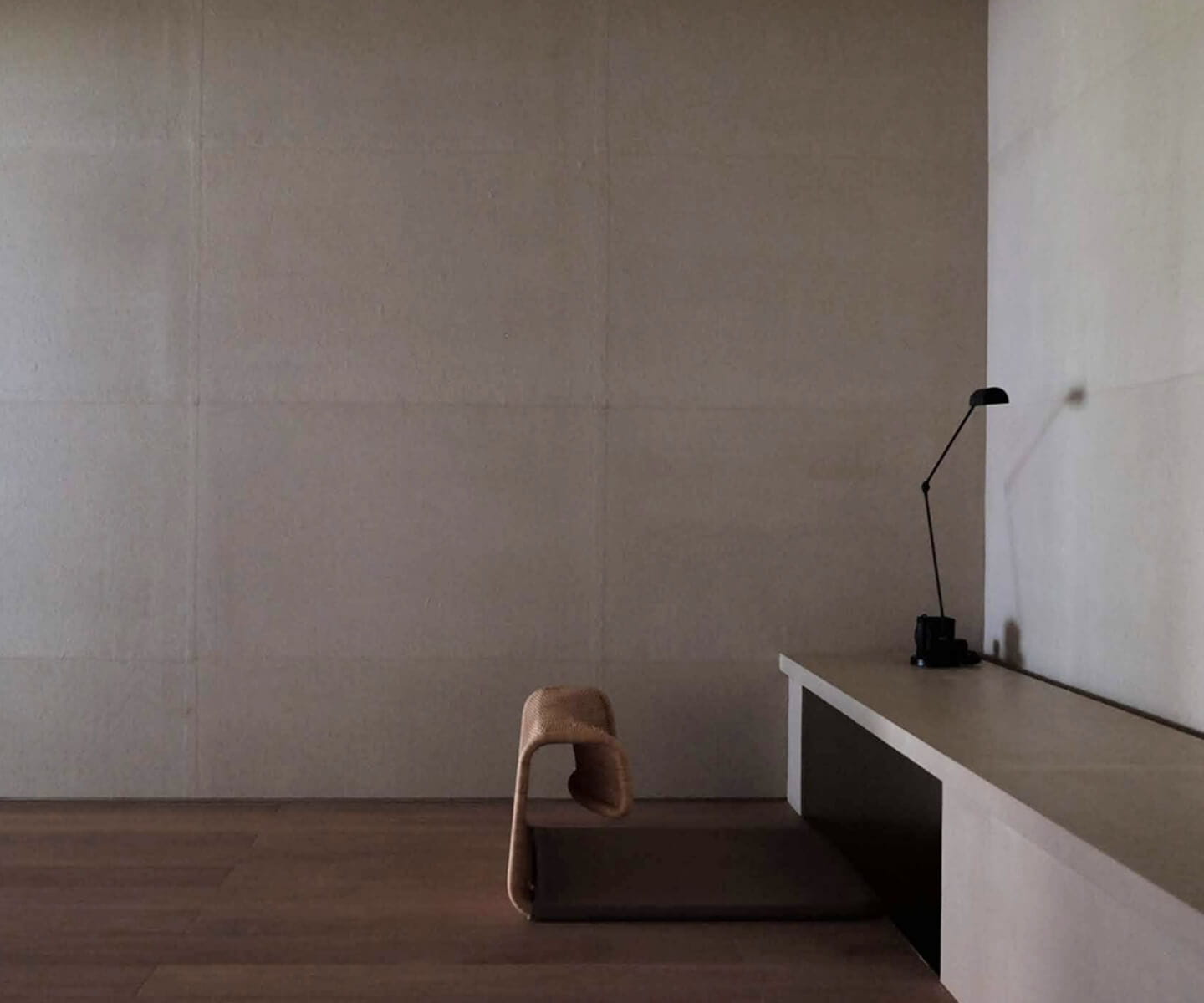
Straw Craft
麦わら細工
Only found in Kinosaki Onsen, the traditional craft of Mugiwara Zaiku (straw craft) practiced locally since 1716. Straw is dyed and cut into tiny pieces, then applied to wood to form incredibly intricate, beautiful patterns. Collaborated with Kinosaki’s Furuya Souvenir Shop, KOBAYASHIYA proud to present our original room key holder contains the straw craft.
日本で城崎温泉にしかない伝統工芸「麦わら細工」は、享保年間(1716)に因州(鳥取)から伝わったとされています。色とりどりに染められた麦わらの精巧豊麗な小筋模様が特徴です。小林屋のルームキー・ホルダーには、「ふるや物産店」オリジナルの麦わら細工が埋め込まれています。